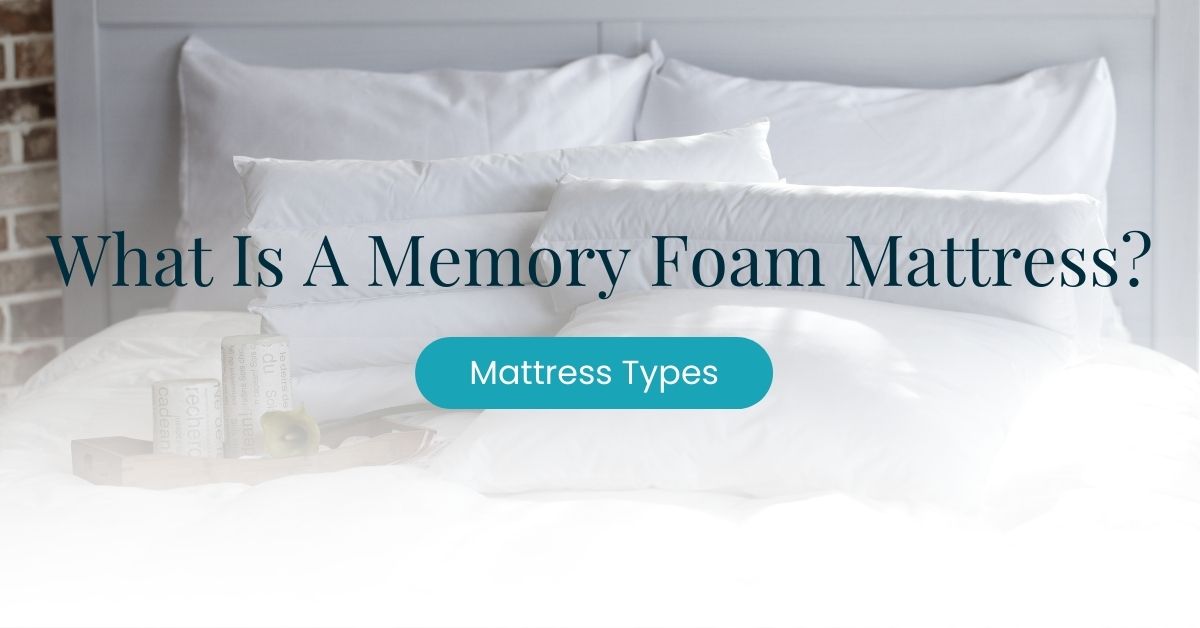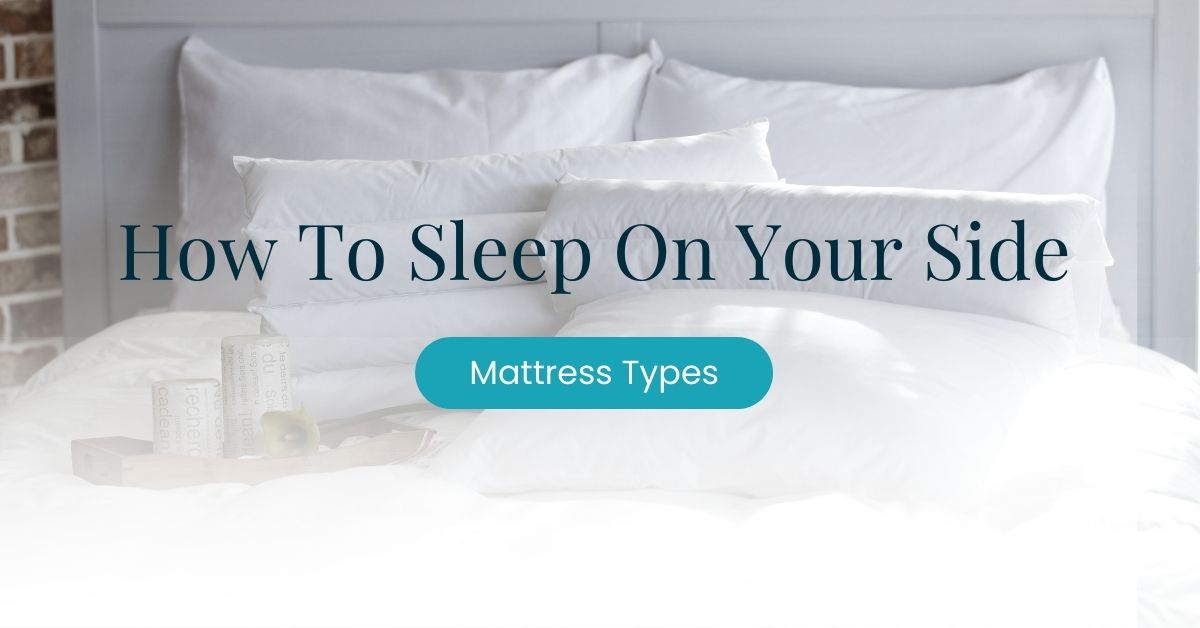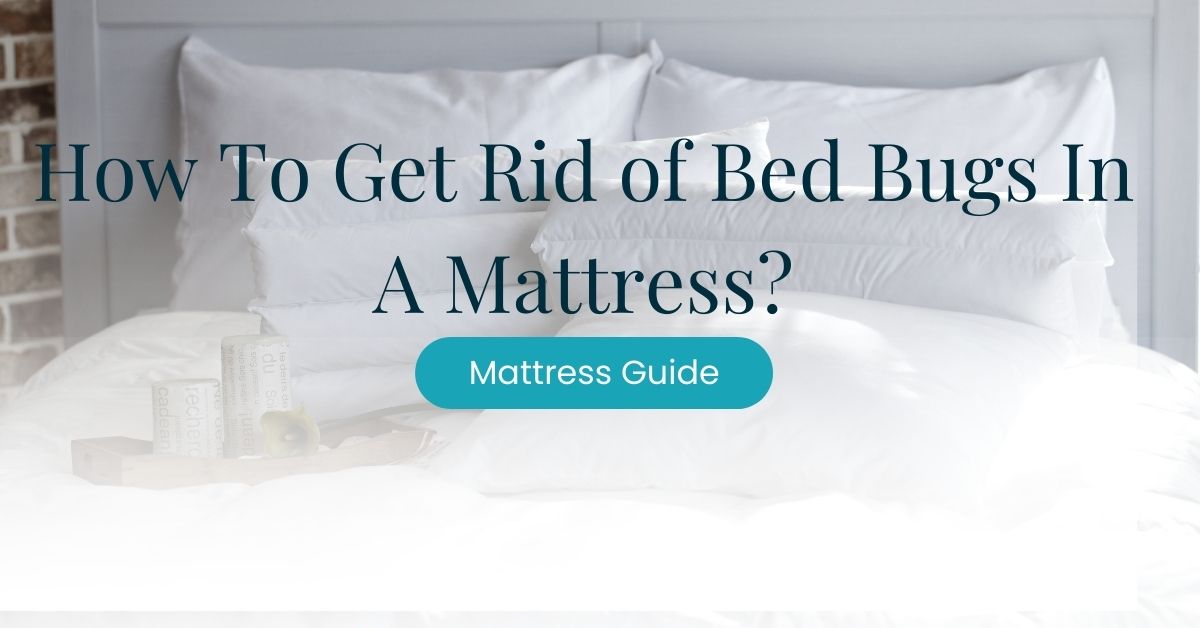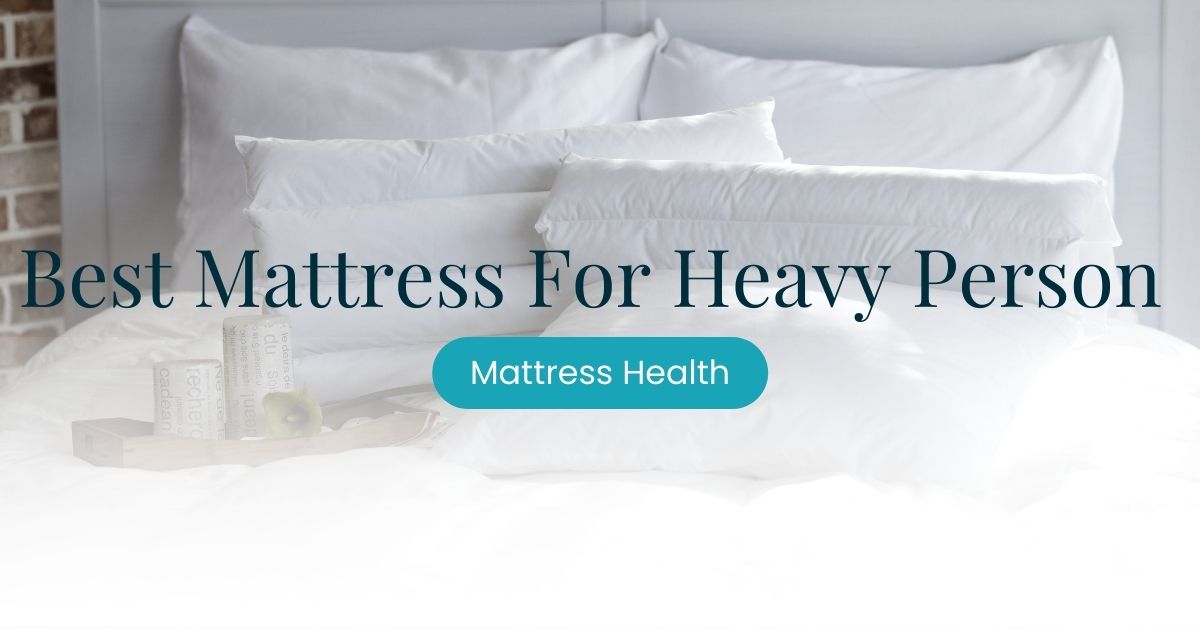A memory foam mattress is a type of mattress that is made of viscoelastic polyurethane foam, which conforms to the shape of the person lying on it and returns to its original shape when pressure is removed.
You’ve probably seen them plastered everywhere, from TV adverts to shop windows. But not knowing who they’re good for and why can result in a bad purchase, resulting in returning it and forking out for a new mattress in the meantime. It’s an unnecessary waste of time and drains your wallet for no good reason. Especially when we have all information for you before you buy!
NASA first developed memory foam in the mid-1960s to help astronauts deal with the high pressure they endured when leaving and reentering the Earth’s atmosphere. People then discovered memory foam’s potential for application in other products, and now used in mattresses, pillows, and other accessories.
How does memory foam work?
It is a visco-elastic foam material. But what does this mean? “Visco” came from the word viscous, which means the resistance of a liquid to flow. Think of it as water being less viscous versus honey being more viscous.
“Elastic” means that an object can be deformed and return to its original shape, just like rubber. Memory foam, having viscoelastic properties, can do this.
Memory foam’s viscosity reduces with higher temperature, essentially becoming more flexible as the temperature rises. It will soften the longer you lay on it, since it absorbs your body’s heat.
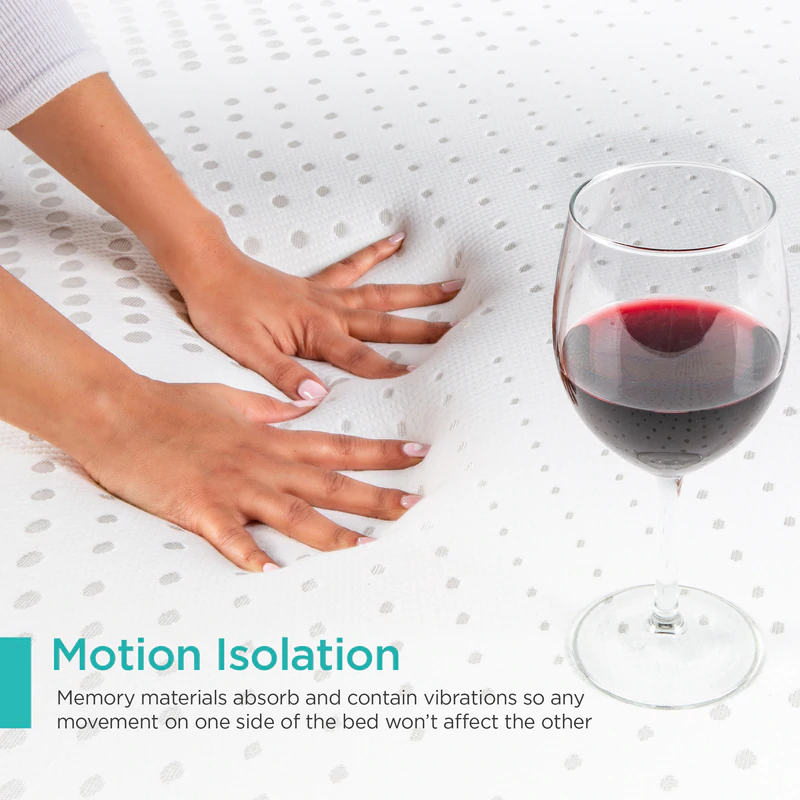
Once you apply pressure to the foam, it moulds to the shape of your body. Once you remove the pressure, it remembers your body form for 5 to 10 seconds and slowly returns back to its original shape only once pressure is released. This phenomenon is known as hysteresis, the time lag between when the force is removed and when the mattress returns to its original shape.
The Science Behind Memory Foam
When you apply pressure to memory foam, the foam uses the body’s heat to soften and mould into your shape. The foam will return to its original form when you remove the pressure. This property is caused by different effects:
- Network Effect – The force working to restore the original shape of the deformed foam by pushing against the applied pressure.
- Pneumatic Effect – This effect is the delayed time of air flowing into the memory foam’s small pores to restore its form.
- Adhesive Effect – This effect is caused by the stickiness of the foam particles when pressed together, which can make the expansion slower.
- Relaxation Effect – This effect limits the mobility of the foam and makes the expansion slow and is mainly affected by temperature.
Memory foam will mould and contour to your body and provide that hugging sensation. This traps heat since there’s little room for airflow between the body and the mattress, and if you’re a side sleeper, this can be a bigger issue.
Memory Foam Mattress Construction
Memory foam comes in different constructions, depending on the manufacturer. However, all memory foam mattresses follow a similar structure. There are three parts to this: the comfort layer, transition layer, and mattress core.
Comfort Layer:
The uppermost section of the mattress contains the memory foam layer and is used for cushioning. Its thickness and layer count depends on the manufacturer’s design. Some models may have two to three layers for the comfort layer and may include traditional memory foam, gel-infused foam, or latex foam.
Since a memory foam mattress can get hot whilst sleeping, new technology has allowed more permeable mattress materials to promote airflow. The two most popular types are gel memory foam and traditional memory foam, where gel-infused foams keep you cooler at night.
Transition Layer:
This mattress section comprises one or more foam layers that serve as a transition between the core and comfort layers. They’re a little firmer than the foam in the comfort levels, and they aid in heat dispersal from the comfort layer by using cooler materials like permeable foams.
Core:
This is the base of the mattress, is usually made out of significantly firmer foam, and is the thickest layer by far. It gives stability and support to the mattress.
Related Read: How To Keep Cool On A Memory Foam Mattress?
Types of Memory Foam
3 main types of memory foam mattresses and they each have unique advantages for different body shapes and sleeping positions.
1. Traditional
Traditional memory foam is what most people probably think of when memory foam is mentioned. After all, it was the original memory foam first introduced to the market. It has a dense structure that NASA initially designed.
This type of foam has a denser structure than open-cell but is less dense than their gel counterparts. Both open-cell and gel were designed to address the heat retention problem of this classic material.
Considering the properties of traditional memory foam, it is recommended for:
- If you sleep cold and need a warmer bed
- People who sleep on their stomach
- People who sleep on their back
2. Open-cell
As mentioned earlier, open-cell memory foam was designed because of the heat retention that comes with regular memory foam.
The main difference is the internal structure, internal pockets or “open cells” allow more airflow within the mattress compared to regular memory foam. The ventilation helps dissipate heat that is absorbed by the memory foam.
Because of the internal pockets, open-cell memory foam is less dense than traditional memory foam. And because of the decreased density, an open-cell mattress usually feels softer.
Considering the properties of the open-cell memory foam, it is recommended for
- if you sleep hot
- if you sleep on your side
- weigh less than 100 kg
3. Gel-infused
Gels are injected into the foam by pumping gel-based microbeads. These microbeads create pockets similar to those found in open-cell mattresses. These gels are “phase-changing” materials. They actively absorb and release heat from your body, rather than merely allowing air to pass through the mattress like an open-cell mattress.
Because the voids in the mattress are mostly filled with gel, gel-infused memory foam is the densest of all three types. It would also feel the most firm because of the density.
Considering the properties of the gel-infused memory foam, it is recommended for people who:
- sleep hot
- sleep on their stomach
- sleep on their back
- people weighing more than 100 kg
Memory Foam Density
Memory foam is available in different densities, affecting the firmness and cost. Foam density is measured as kilograms per cubic meter. If you’re an up-cycler or like to repurpose sleeping accessories, this affects how hard memory foam is to cut.
You can refer to the table below for a general reference on the different foam densities.
Foam Density | Feel | Density | Recommended Sleeper Weight | Recommended Sleeping Position |
Low | Soft | 40 kg | Lighter body; Less than 100 kg | Side sleeper |
Medium | Medium firm | 60 kg | Average body; Less than 100 kg | Side sleeper, back sleeper, stomach sleeper |
High | Firm | 80 kg | Heavier body; More than 100 kg | Back sleeper, stomach sleeper |
The higher the density is, the firmer and more supportive the mattress is. High-density mattresses can support weights of more than 100 kg and give enough support for stomach sleepers without sinking deeply into the mattress.
In terms of cost, higher densities would come at a higher price because of the materials used. The durability of a mattress also depends on the density. Low-density mattresses lose their form and flexibility faster, whereas high-density mattresses can better resist compressions over time. Higher memory foam densities are beneficial for heavier people of 200+ lbs and people with back and joint problems.
Most prefer medium density foam because it is suitable for all sleeping positions and less expensive than the high-density foam. If you’re wondering what density is best for you, we recommend testing it out personally at a mattress store. The firmness is always subjective to a person’s weight, and mattress quality differs from one manufacturer to another.
Benefits of Memory Foam Mattress
Because of the numerous benefits that memory foam mattresses give, they are a popular choice. These benefits include:
Conforms to Body
Memory foam responds to body heat and pressure by adapting to the shape of your body. This is ideal for various sleeping positions because it cradles your body’s natural curves and relieves pressure points.
When sleeping, it aligns the body’s neck, spine, and hips since it adjusts to your exact sleeping posture. When the mattress does not conform to the body, the spine will not be in alignment and may cause back pain later on. People suffering from back and joint pain should benefit from using a memory foam mattress.
Motion Isolation
The dense structure of the memory foam is the reason for the superior motion isolation because of the compact cells that serve as shock-absorbers.
This is perfect for couples sharing a bed, especially if one is constantly tossing and turning at night or you go to sleep and wake up at different times.
Quiet
Unlike spring mattresses where you may hear squeaks, a memory foam mattress is known to have noise reduction qualities – even when jumping on the bed. This quality is crucial for couples who share a bed and don’t want to disturb their partners while getting out of bed.
Hypoallergenic and Dust-mite Resistant
Memory foam is hypoallergenic. The density levels of memory foam make it hard or almost impossible for dust mites and other allergens to infiltrate the foam.
Works with Adjustable Base Beds
Adjustable beds are recent innovations in the bedding industry that allow you to raise your bed in reclining positions. Unlike spring mattresses with a metal frame, memory foam mattresses have more flexible bases that can be used for adjustable beds.
Disadvantages of Memory Foam Mattress
Although there are great benefits, there are drawbacks. Memory foam isn’t for everybody. Below are some of memory foam’s disadvantages, as reported by some users.
Absorbs and Retains Heat
Since memory foam uses your body’s heat to adjust to its natural shape, there is a tendency for too much heat to be trapped inside the mattress. The dense structure of the memory foam also makes it hard for air ventilation.
This can lead to overheating on hot summer nights. So, if you’re a hot sleeper, you’ll probably suffer from sleeping too hot and excessive sweating.
Tip: A mattress cover, or a mattress topper, is one way to resolve this issue. Cool materials like cotton and wool are helpful in this case.
Initial Odour
Due to the chemicals used in the manufacturing process, memory foam mattresses come with an initial chemical smell after opening them. This is called off gassing.
The foam itself, resin, and adhesives produce these gasses known as volatile organic compounds or VOCs. Flame retardants applied on the mattress to meet the government-mandated standards can also produce VOCs or off-gassing.
But don’t worry. It’ll pass for a few days if you keep the mattress in a well-ventilated room. Regulatory agencies like EU Regulation also guarantee that off-gassing from mattress manufacturers is kept to safe levels.
Maintenance
Water or any liquid can harm memory foam by deteriorating the foam and shortening the memory foam mattress’s lifespan. If you reside in a humid environment or have a young child or pet prone to spills or accidents, read our tip below. This also makes it tough to clean a memory foam mattress.
Tip: If you’re going with memory foam, using a waterproof mattress protector or cover is good. They protect your mattress from any liquids that could potentially compromise the quality.
Cost
All these great benefits come with a cost. Compared to regular innerspring or foam mattresses, memory foam is generally more expensive. Especially if you consider buying a high-density memory foam. For example, Emma memory foam king mattress is priced at around £440. In comparison, John Lewis & Partners spring king mattress is priced at about £210.
How long does a memory foam mattress last?
The lifespan of a memory foam mattress is up to 10 years, if properly cared for. The National Bed Foundation says 7 years but after our own experiences we know it can outlast this.
How To Prolong Memory Foam Lifespan?
One of the properties that make memory foam mattresses hypoallergenic is the density of the foam. However, this also makes it much more difficult to maintain and clean your memory foam mattress. Regular cleaning of your memory foam mattress can help prolong its lifespan, and that includes:
- changing the bedding
- vacuuming dust and debris
- wiping spilt liquids immediately
Rotating the memory foam mattress once a month is also a good practice and a recommendation by some manufacturers. Memory foam begins to sag and soften over time, so to balance this wear and tear, you can flip the mattress or rotate it from head to toe.
Check with the manufacturer’s care instructions if your mattress needs rotation or flipping.
Does Memory Foam Sag?
A memory foam mattress may sag as over time the frequency of use and the sleeper’s weight causes indentations on the mattress. The more the mattress bears weight, the faster it deteriorates because of the compression of the foam.
If you buy a mattress with high quality memory foam then the density should help it hold it’s shape for longer.
Can a memory foam mattress cause back pain?
Back pain may be caused by your sleeping position and how your spine is aligned during sleep. A memory foam mattress is often recommended for back pain because of its body contouring capability, allowing for greater spinal alignment. If your memory foam is too soft for your weight, you will sink too deep into the mattress. Your spine won’t be in alignment and may cause back aches and pains.
On the other hand, if your memory foam is too firm, it would cause pressure on your back and cause back pain. It is crucial to test out the mattress you’re buying first. As a rough guide, below is a guideline for choosing firmness depending on your weight.
- Soft mattress: Sleepers of less than 70 kg (150 lbs)
- Medium-firm mattress: Sleepers of 70 to 100 kg (150 to 230 lbs)
- Firm mattress: Sleepers of more than 100 kg (230 lbs)
Summary
Overall, memory foam mattresses are an excellent option for a new mattress. They are cost-effective and long-lasting, ensuring that you get your money’s worth and providing additional health advantages to improve your sleep quality.
2 Sources
- National Aeronautics and Space Administration
https://spinoff.nasa.gov/Spinoff2005/ch_6.html - Radwan A, Fess P, James D, Murphy J, Myers J, Rooney M, Taylor J, Torii A. Effect of different mattress designs on promoting sleep quality, pain reduction, and spinal alignment in adults with or without back pain; systematic review of controlled trials. Sleep Health. 2015 Dec;1(4):257-267. doi: 10.1016/j.sleh.2015.08.001. Epub 2015 Oct 19. PMID: 29073401.
https://pubmed.ncbi.nlm.nih.gov/29073401/


